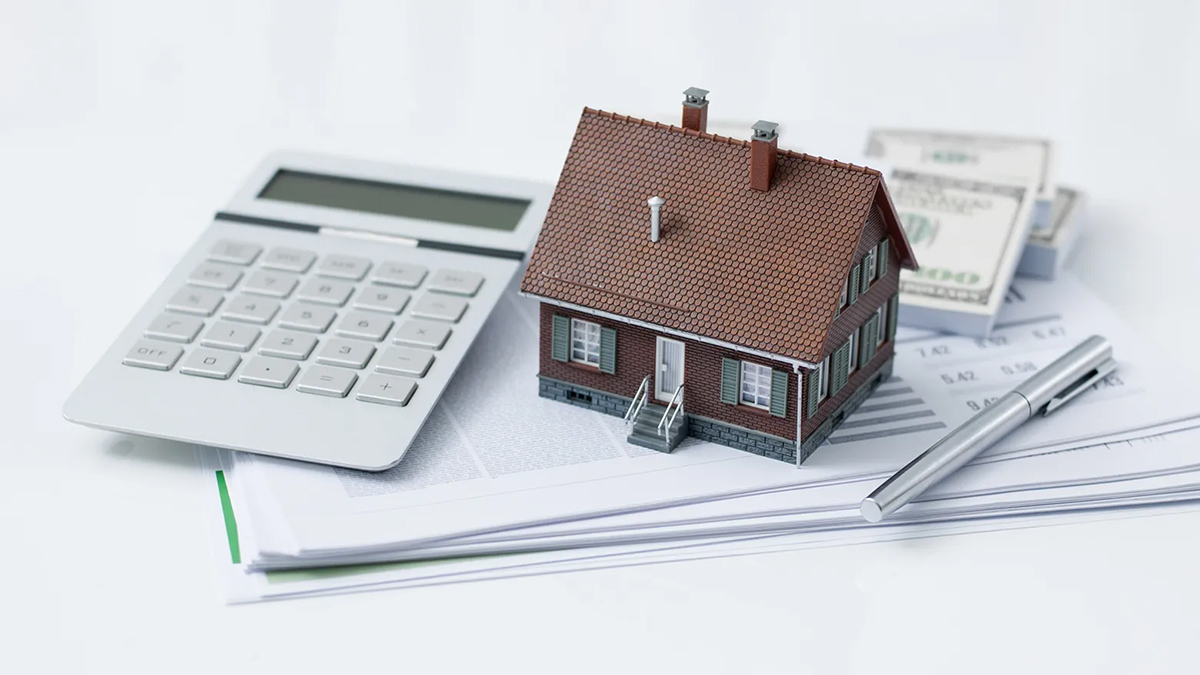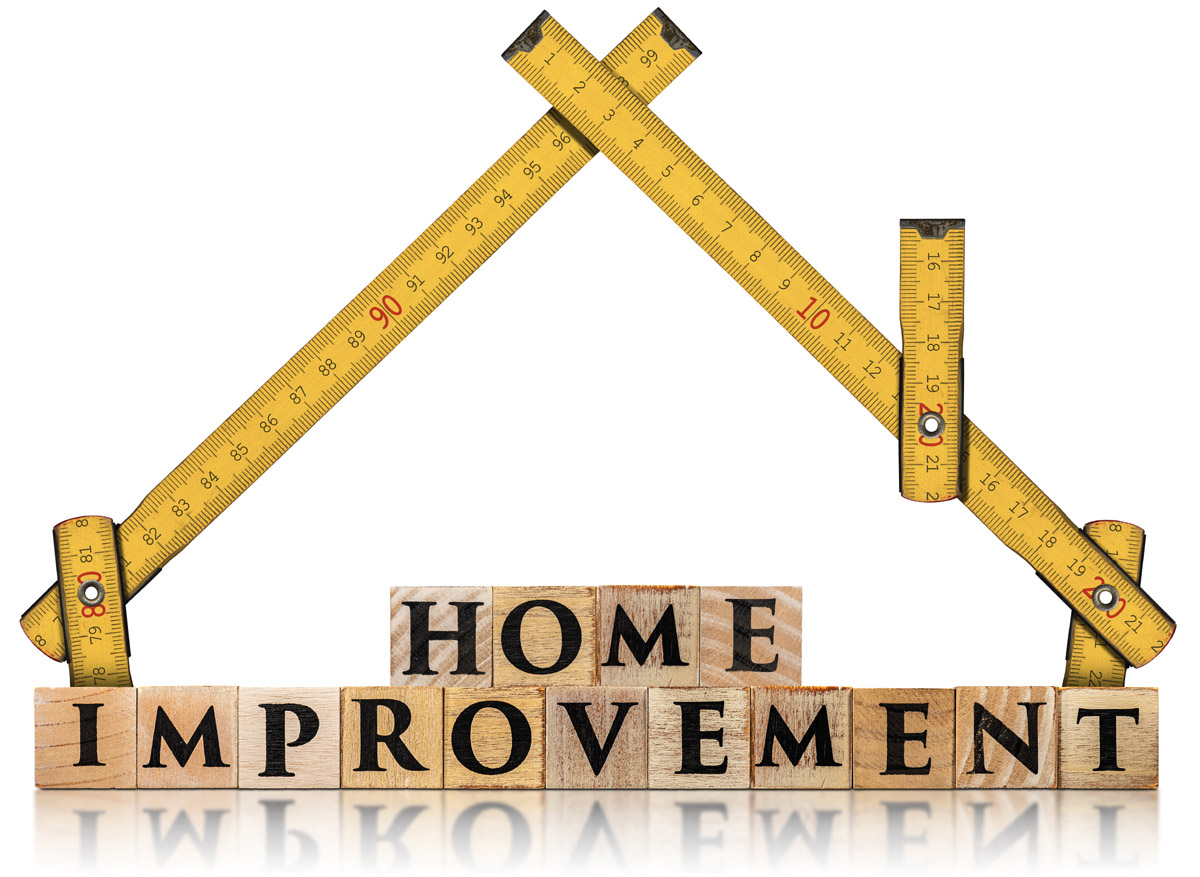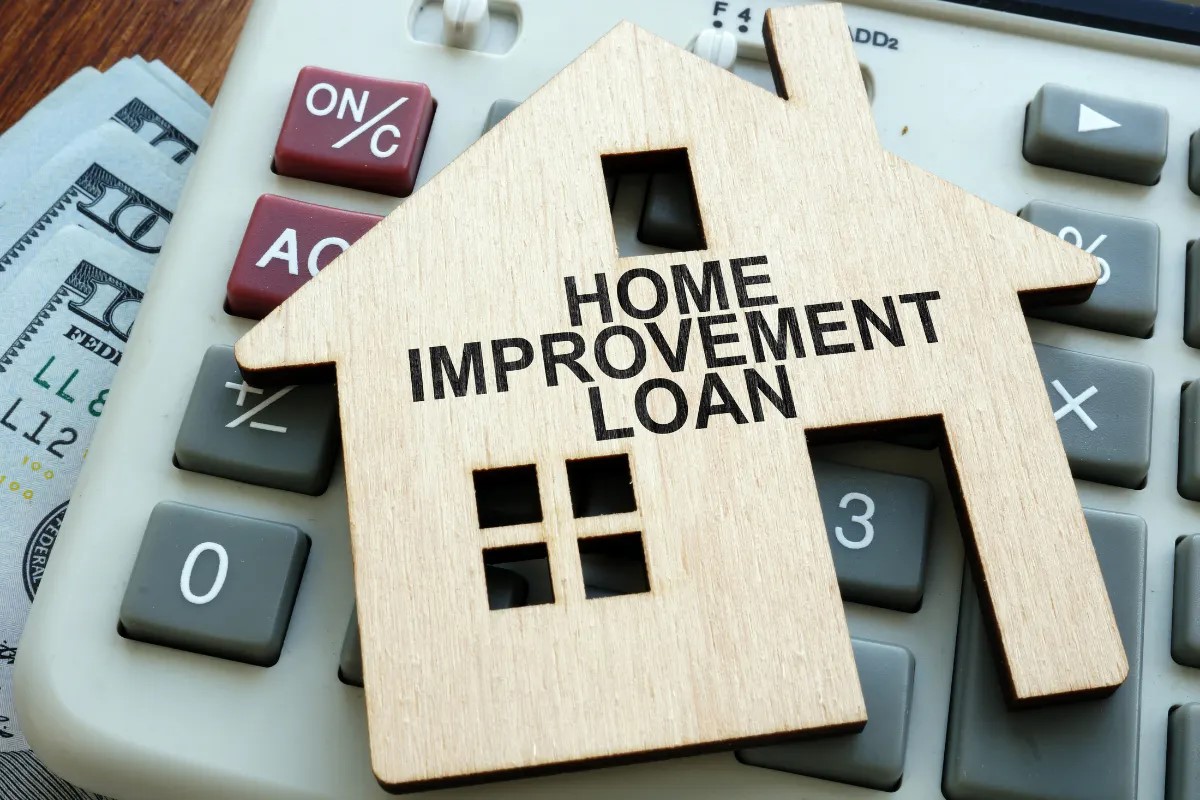Home>Renovation & DIY>Home Renovation Guides>What Is The Best Loan For Home Improvement


Home Renovation Guides
What Is The Best Loan For Home Improvement
Modified: January 9, 2024
Looking for the best loan for home improvement? Our comprehensive home renovation guides will help you choose the right financing option for your project. Discover the perfect loan for your home renovation needs today!
(Many of the links in this article redirect to a specific reviewed product. Your purchase of these products through affiliate links helps to generate commission for Storables.com, at no extra cost. Learn more)
Introduction
Welcome to the world of home improvement! Whether you’re looking to renovate your kitchen, add a new bathroom, or revamp your outdoor space, home improvement projects can breathe new life into your living space and increase the value of your property. However, funding these projects can be a significant hurdle for many homeowners. This is where understanding the best loan options for home improvement becomes crucial.
When it comes to financing your home renovation, it’s essential to explore various loan options to find the best fit for your specific needs. From personal loans to home equity loans and cash-out refinancing, each option comes with its own set of advantages and considerations.
In this comprehensive guide, we’ll delve into the different types of loans available for home improvement, providing you with valuable insights to help you make an informed decision. By understanding the intricacies of each loan option, you can confidently embark on your home improvement journey, knowing that you’ve chosen the best financing solution for your project.
Key Takeaways:
- Choose a personal loan for smaller projects with fixed rates and quick access to funds. Consider home equity loans for larger renovations with stable, lower interest rates.
- HELOCs offer flexible access to funds for ongoing expenses, while cash-out refinance loans provide lump sum payments for substantial renovations. Consider your financial discipline and long-term implications when choosing the best loan for your home improvement project.
Personal Loan for Home Improvement
When it comes to financing home improvement projects, a personal loan is a versatile option that offers flexibility and convenience. Personal loans are unsecured, meaning they don’t require collateral such as your home or other assets. This can be a significant advantage for homeowners who may not want to put their property at risk.
One of the key benefits of a personal loan for home improvement is the streamlined application process. Many financial institutions and online lenders offer personal loans with straightforward application procedures, quick approval times, and fixed interest rates. This can provide peace of mind, as you’ll know exactly how much you need to repay each month.
Additionally, personal loans typically have shorter terms compared to home equity loans or HELOCs, which can be advantageous for those looking to pay off their home improvement expenses within a few years. The ability to borrow a specific amount, often ranging from a few thousand to tens of thousands of dollars, allows homeowners to fund their projects without tapping into their home equity.
It’s important to note that personal loans may have higher interest rates compared to home equity options, as they are unsecured. However, for individuals with good credit scores, personal loans can still offer competitive rates, making them a viable choice for financing home renovations.
Before applying for a personal loan, it’s advisable to shop around and compare offers from different lenders to secure the most favorable terms. By carefully assessing the interest rates, repayment terms, and any associated fees, you can ensure that you’re obtaining the best possible personal loan for your home improvement needs.
Home Equity Loan
A home equity loan, also known as a second mortgage, is a popular financing option for homeowners seeking to fund their home improvement projects. This type of loan allows individuals to borrow against the equity they’ve built in their homes, providing access to substantial funds for renovations, repairs, or additions.
One of the primary advantages of a home equity loan is the potential for lower interest rates compared to other loan types. Since the loan is secured by the value of your home, lenders may offer more favorable terms, making it an attractive option for those looking to minimize borrowing costs.
Home equity loans typically come with fixed interest rates and predictable monthly payments, providing homeowners with a clear understanding of their financial obligations. This stability can be beneficial when budgeting for home improvement projects, as it allows for consistent planning and management of expenses.
Another advantage of a home equity loan is the lump sum payment it provides. This can be advantageous for large-scale renovations or projects with substantial upfront costs, as homeowners receive the entire loan amount at once. Whether you’re remodeling your entire home or undertaking a major structural upgrade, having access to a significant sum of money upfront can streamline the funding process.
It’s important to carefully assess your financial situation and the potential impact of taking out a home equity loan. Since your home serves as collateral, defaulting on the loan could put your property at risk of foreclosure. Additionally, closing costs and fees associated with home equity loans should be factored into your decision-making process.
Before pursuing a home equity loan, it’s advisable to consult with a financial advisor or mortgage specialist to gain a comprehensive understanding of the terms, repayment structure, and potential risks associated with this type of loan. By conducting thorough research and seeking professional guidance, you can make an informed decision regarding the use of a home equity loan for your home improvement endeavors.
Home Equity Line of Credit (HELOC)
For homeowners in need of flexible financing for home improvement projects, a Home Equity Line of Credit (HELOC) can offer a versatile and accessible solution. Unlike a traditional home equity loan, a HELOC provides a revolving line of credit that allows homeowners to borrow against the equity in their homes as needed, similar to a credit card.
One of the key advantages of a HELOC is its flexibility. Rather than receiving a lump sum at the outset, homeowners can access funds on an as-needed basis during the draw period, which is typically several years. This feature makes a HELOC an ideal choice for projects with ongoing expenses or those with fluctuating funding requirements.
Another benefit of a HELOC is the potential for lower initial costs compared to a home equity loan. Since homeowners only pay interest on the amount they borrow, the initial payments can be more manageable, especially during the draw period. This can be particularly advantageous for individuals who anticipate phased or ongoing home improvement expenses.
Furthermore, HELOCs often come with variable interest rates, which can offer both advantages and considerations. While homeowners may benefit from lower initial rates and potential tax advantages on the interest paid, they should be prepared for the possibility of fluctuating payments based on market conditions.
It’s important to carefully consider your financial discipline and ability to manage a line of credit effectively. Since a HELOC provides ongoing access to funds, responsible budgeting and financial planning are essential to avoid overextending your resources or accumulating excessive debt. Additionally, understanding the terms of the draw period and the subsequent repayment phase is crucial for long-term financial stability.
Prior to pursuing a HELOC for home improvement financing, it’s advisable to compare offers from different lenders and carefully review the terms, including interest rates, draw periods, repayment requirements, and any associated fees. By conducting thorough research and seeking guidance from financial professionals, homeowners can make informed decisions regarding the use of a HELOC for their renovation projects.
Consider a home equity loan for large home improvement projects, as it offers a lower interest rate and tax-deductible interest. However, for smaller projects, a personal loan may be a better option due to its faster approval process.
Cash-Out Refinance Loan
For homeowners seeking to leverage the equity in their property to fund home improvement projects, a cash-out refinance loan can offer a strategic financial solution. This type of loan allows homeowners to refinance their existing mortgage, obtaining a new loan that is greater than the amount owed. The excess funds, representing the equity in the home, can then be used to finance renovations, upgrades, or other home-related expenses.
One of the primary advantages of a cash-out refinance loan is the potential for securing a lower interest rate compared to other financing options. By refinancing the existing mortgage at a favorable rate, homeowners can access additional funds for home improvements while potentially reducing their overall borrowing costs.
Furthermore, a cash-out refinance loan provides homeowners with a lump sum payment, offering immediate access to the equity accumulated in their property. This can be particularly advantageous for substantial renovation projects or those with significant upfront expenses, providing a straightforward and substantial source of funding.
It’s important to carefully assess the financial implications of a cash-out refinance loan, including the impact on the overall mortgage terms and repayment timeline. Since the new loan amount will be based on the appraised value of the property, homeowners should consider the potential effect on their monthly mortgage payments and long-term financial commitments.
Before pursuing a cash-out refinance loan, homeowners should conduct a thorough cost-benefit analysis to determine the feasibility and potential savings associated with this option. Considering factors such as closing costs, interest rates, and the impact on the overall mortgage term is essential for making an informed decision.
Consulting with a mortgage specialist or financial advisor can provide valuable insights into the implications of a cash-out refinance loan and help homeowners navigate the decision-making process effectively. By carefully evaluating the benefits and considerations of this financing option, homeowners can determine whether a cash-out refinance loan aligns with their home improvement goals and long-term financial objectives.
Read more: Which Loan Is Best For Home Improvements?
Comparison of Different Loan Options
When exploring the best loan options for home improvement, it’s essential to compare the features, benefits, and considerations of each financing solution to make an informed decision. Let’s delve into a comparative analysis of personal loans, home equity loans, HELOCs, and cash-out refinance loans to understand their respective advantages and potential trade-offs.
- Personal Loan: Personal loans offer unsecured financing with fixed interest rates and predictable monthly payments. They are ideal for smaller to medium-sized home improvement projects and provide quick access to funds with streamlined application processes. However, they may come with higher interest rates compared to home equity options.
- Home Equity Loan: Home equity loans provide lump sum payments with fixed interest rates, offering stability and favorable borrowing terms. They are suitable for larger renovation projects and may offer lower interest rates due to the collateralized nature of the loan. However, homeowners should carefully consider the potential impact on their property and factor in associated closing costs.
- Home Equity Line of Credit (HELOC): HELOCs offer flexible access to funds with variable interest rates during the draw period. They are well-suited for projects with ongoing or fluctuating expenses and provide homeowners with the ability to borrow as needed. While initial costs may be lower, homeowners should be prepared for potential interest rate fluctuations and exercise financial discipline to manage ongoing access to funds responsibly.
- Cash-Out Refinance Loan: Cash-out refinance loans allow homeowners to leverage the equity in their property to obtain a new mortgage with additional funds for home improvements. They may offer lower interest rates and provide a lump sum payment for substantial renovation projects. However, homeowners should carefully evaluate the impact on their overall mortgage terms and consider the associated closing costs and long-term financial implications.
When comparing these loan options, homeowners should consider factors such as the size and scope of their home improvement project, their financial discipline and ability to manage ongoing access to funds, the potential impact on their property, and the long-term implications for their overall mortgage terms and borrowing costs.
Additionally, consulting with financial advisors, mortgage specialists, and reputable lenders can provide valuable guidance in navigating the decision-making process and selecting the most suitable financing option for specific home improvement needs.
By carefully weighing the features and considerations of each loan type, homeowners can make informed choices that align with their renovation goals, financial objectives, and long-term stability.
Conclusion
Embarking on a home improvement journey is an exciting and transformative experience, and securing the right financing is a crucial step in bringing your vision to life. As we’ve explored the various loan options available for home improvement, it’s evident that each option offers unique advantages and considerations, catering to different project scopes, financial preferences, and long-term objectives.
When determining the best loan for home improvement, it’s essential for homeowners to assess their specific needs, financial capabilities, and the nature of their renovation projects. Whether it’s a personal loan for a modest upgrade, a home equity loan for a substantial renovation, a HELOC for ongoing expenses, or a cash-out refinance for leveraging home equity, understanding the intricacies of each financing solution is paramount.
Furthermore, careful consideration of factors such as interest rates, repayment terms, access to funds, potential impact on property, and overall borrowing costs is essential in making an informed decision. By conducting thorough research, comparing offers from reputable lenders, and seeking guidance from financial professionals, homeowners can navigate the loan selection process with confidence and clarity.
Ultimately, the best loan for home improvement is one that aligns with your renovation goals, financial objectives, and long-term stability. Whether it’s enhancing the functionality of your living space, increasing the value of your property, or realizing your dream home, the right financing solution can empower you to embark on your home improvement journey with assurance and excitement.
As you venture into the realm of home renovation, may the chosen loan option serve as a catalyst for turning your vision into reality, creating a space that reflects your style, meets your needs, and enriches your lifestyle. With the right financing in place, your home improvement endeavors can unfold seamlessly, ushering in a new chapter of comfort, beauty, and fulfillment within the walls of your cherished abode.
Frequently Asked Questions about What Is The Best Loan For Home Improvement
Was this page helpful?
At Storables.com, we guarantee accurate and reliable information. Our content, validated by Expert Board Contributors, is crafted following stringent Editorial Policies. We're committed to providing you with well-researched, expert-backed insights for all your informational needs.















0 thoughts on “What Is The Best Loan For Home Improvement”